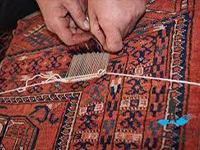The first exhibition of Western European and Indo-European carpets in Iran will be held at the same time as the Research Week by the Research Institute of Cultural Heritage and Tourism.
According to Mehr news agency, Shokofeh Mesbahi, the scientific and executive secretary of this exhibition, announced this news and said: The idea of the exhibition “European and Indo-European carpets” with the focus on French Sauneri carpets, is to introduce European carpets and provide the opportunity to see and learn about carpet weaving. Other countries were formed.
He added: The collection presented in the exhibition includes seven French carpets, three Indo-European carpets and one English carpet.
Mesbahi said: This exhibition is held with the support of the Cultural Heritage and Tourism Research Institute and the cooperation of the National Committee of Iranian Museums (ICOM), the Research Institute for the Protection and Restoration of Historical and Cultural Monuments, the Iran Carpet Museum, and Mr. Siamak Afsari Kashani.
Shokofeh Mesbahi, the head of the carpet research department of the Conservation and Restoration Institute, pointed out that over time and through cultural exchanges, the art and knowledge of carpet production from Iran reached neighboring countries, adding: Iranian carpets in the Achaemenid, Sassanid, and Safavid eras through Greek historians In ancient times, it was introduced to the geographers of the Orient, travelers and envoys of European courts and also as one of the gifts of the king of Iran to the kings of Europe and other countries.
He said: European kings’ interest in oriental carpets, especially tufted carpets, led to the support and production of carpets in Europe, and royal workshops were established in different European countries to furnish the halls of royal palaces with carpets suitable for taste, art and their need to produce.
According to Mesbahi, the raw materials, the way of weaving and some design indicators are directly or indirectly indebted to Iran, but the carpets woven in Europe are different in design, map reading, coloring and texture density of the oriental rugs.
He also added: When India was a British colony, carpet weaving workshops were set up in its prisons to weave carpets for British palaces. These carpets are known as Indo-European carpets, and most of their designs are derived from oriental carpets, especially Iranian carpets.
This exhibition will be held for 20 days from December 28 to December 17 in the upper hall of Iran Carpet Museum.


